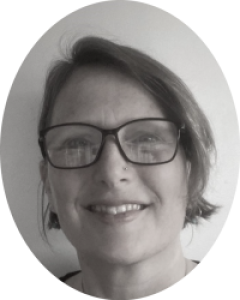Last week I was excited to receive a copy of Writing Short Stories: A Writers’ and Artists’ Companion by Courttia Newland and Tania Hershman — thanks to Tania Hershman for this. Just before Christmas, I’d commented on Tania’s blog post about permission to write, and was randomly selected from the commenters to receive a copy.
So who does give us permission to write? Readers cited coming of age (40 in particular), an inner voice, an online course, other writers’ originality (hear, hear — I second Eimear McBride as inspiration), and teachers (that too — thank you, Mrs Moynard, for bringing Beowulf to life; I helped teach the same story to a class of seven-year-olds last year).
In my comment, I said that I didn’t know if I had permission to write but I write anyway.
There’s a joyful moment at the beginning of a writing career when you know no limits — long may it last. I started writing a few years ago, unaware of needing “permission” to write as I wished. However, as time passed and I consulted more texts and websites for advice on writing, the rules swooped in to peck away at my confidence and my prose. It took me a while to realise that while it helps to know the basics of grammar before you write, the rules should be a solid platform for experimentation, not a cage. It’s fiction — a creative art — after all.
That we don’t need “permission” to write should be obvious, but for me, this was a timely and essential reminder, and I’m very grateful to Tania.
I’ve started dipping into the book, and it’s a gem. There’s a history of the short story — including a fabulous quote from Kasia Boddy about Frank Norris:
For Norris, the form best suited to retain, or promote, unsettled manliness was short fiction. Only the short story, he claims, would allow the writer to express “growing and living … in spots, here a little, there a little, scattered bits of life and movement, quite independent of each other.”
(Tania asks, “What of unsettled womanliness?”)
The book goes on to discuss genre, story length / flash fiction, reflections on writing, evolution and editing (including a story presented in its various drafts, with author commentary on the reasons for its evolution), and permission and risk.
Part 2, which I’ve yet to read, invites guest authors to comment on short fiction — Jenn Ashworth, Julia Bell, Anthony Doerr, Vanessa Gebbie, Tom Lee, Toby Litt, Alexander McLeod, Alison McLeod, James Miller, Alison Moore, Ryan O’Neill, Edith Pearlman, Jane Rogers, Henrietta Rose-Innes, Elspeth Sandys, Olive Senior, Di Speirs, Adam Thorpe, David Vann, and Clare Wigfall.
There are some almighty writers in there, so I’m really looking forward to reading it.
Part 3 addresses some of the more technical aspects of writing — starting points, plot, movement and syncopation, tension, editing, tenses, structure, character and voice, constraint, competitions, collections and short story examples.
It’s a small book, and this is a hell of a list of topics — but it’s cleverly written and packs a lot in. So far, I’ve found it to be a goldmine of ideas — each section is fairly succinct, but rich in references and food for thought. For every read, there’s a Google search or a delve into the library, and it’s making me think — really, really think — about my writing. About what I achieved when I started, how I’ve changed, and how I’d like to evolve.
If I had to sum it up in one line, I’d say, this is one of those books that I’ll really use.
Instead of reading it from cover to cover, then placing it carefully in the reference section of our home library, I’m going to bend its spine, scribble in the margins, cover it in post-it notes, dip into different sections depending on whim or need, and thumb the thing ragged and grey. It’s going to slide down the side of my bed, get picked up from the floor, and be bent and stuffed into bags and pockets (it’ll fit into a reasonable-sized coat pocket). It might, given time, even get a coffee ring.
Because I love it.
